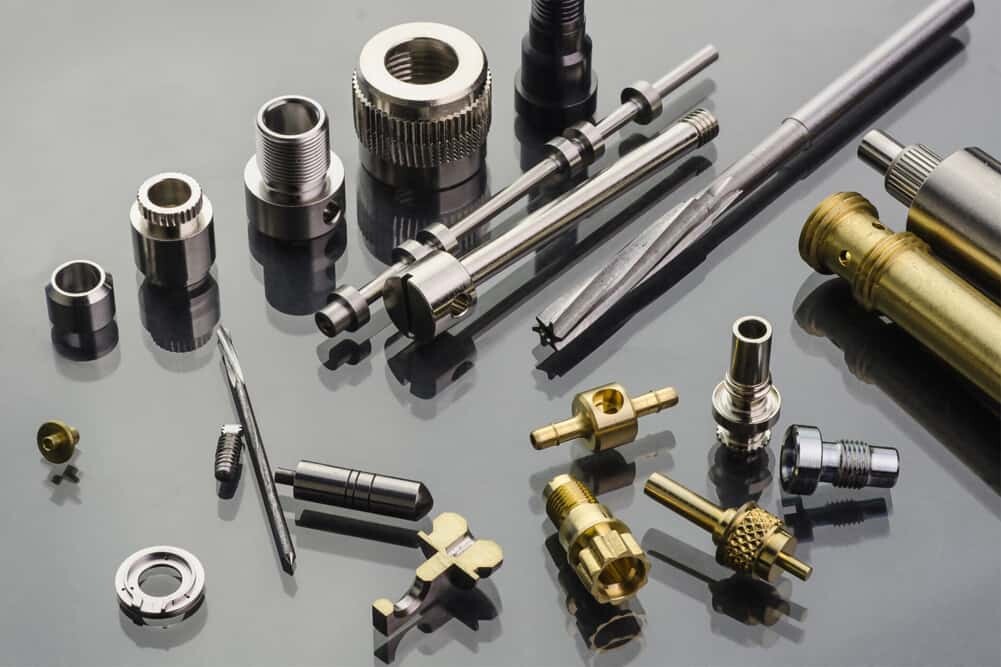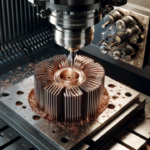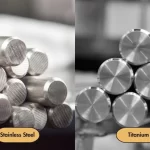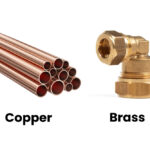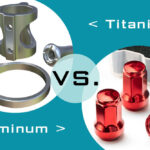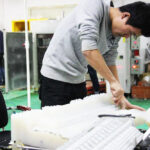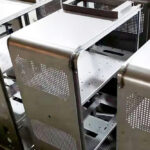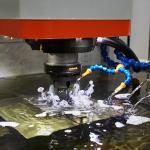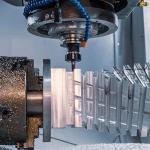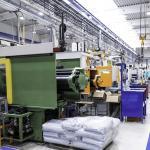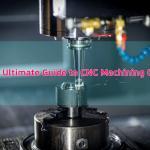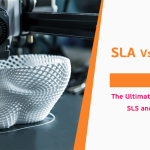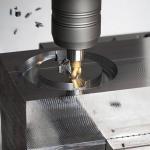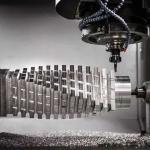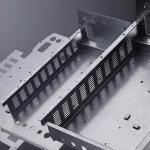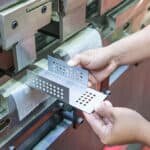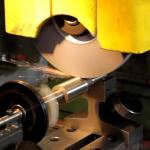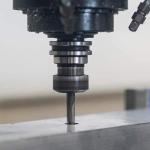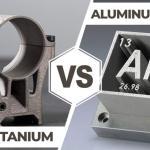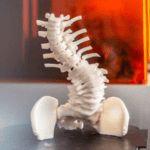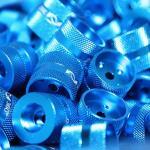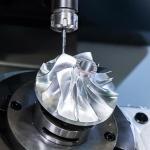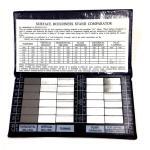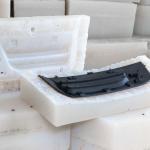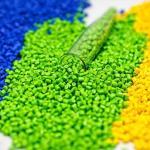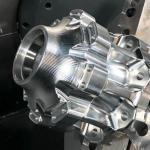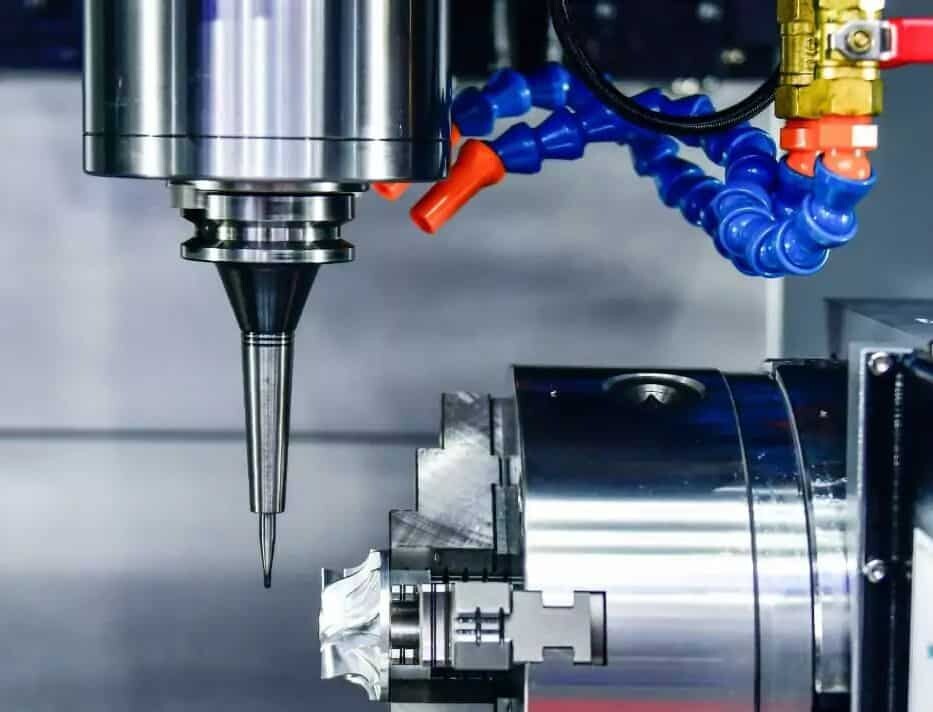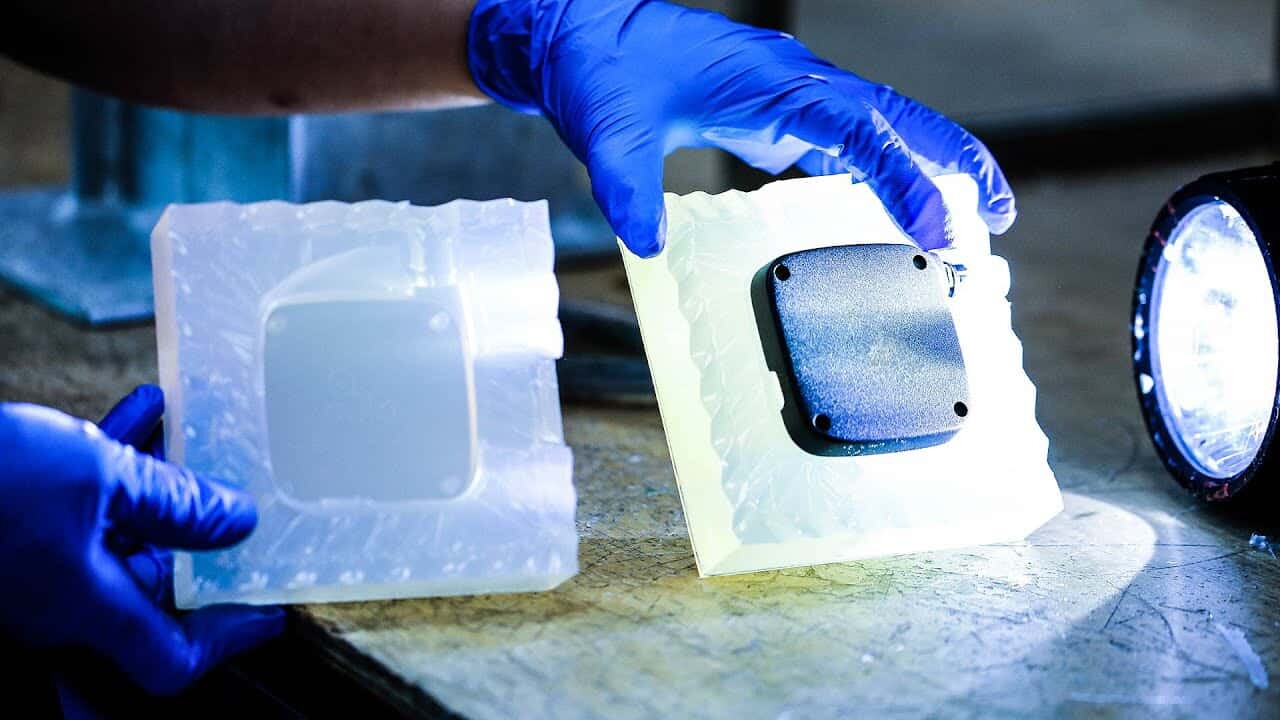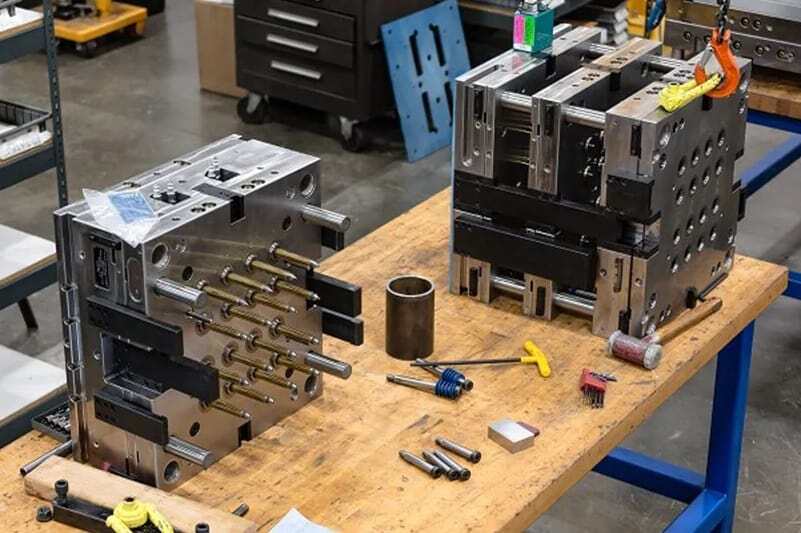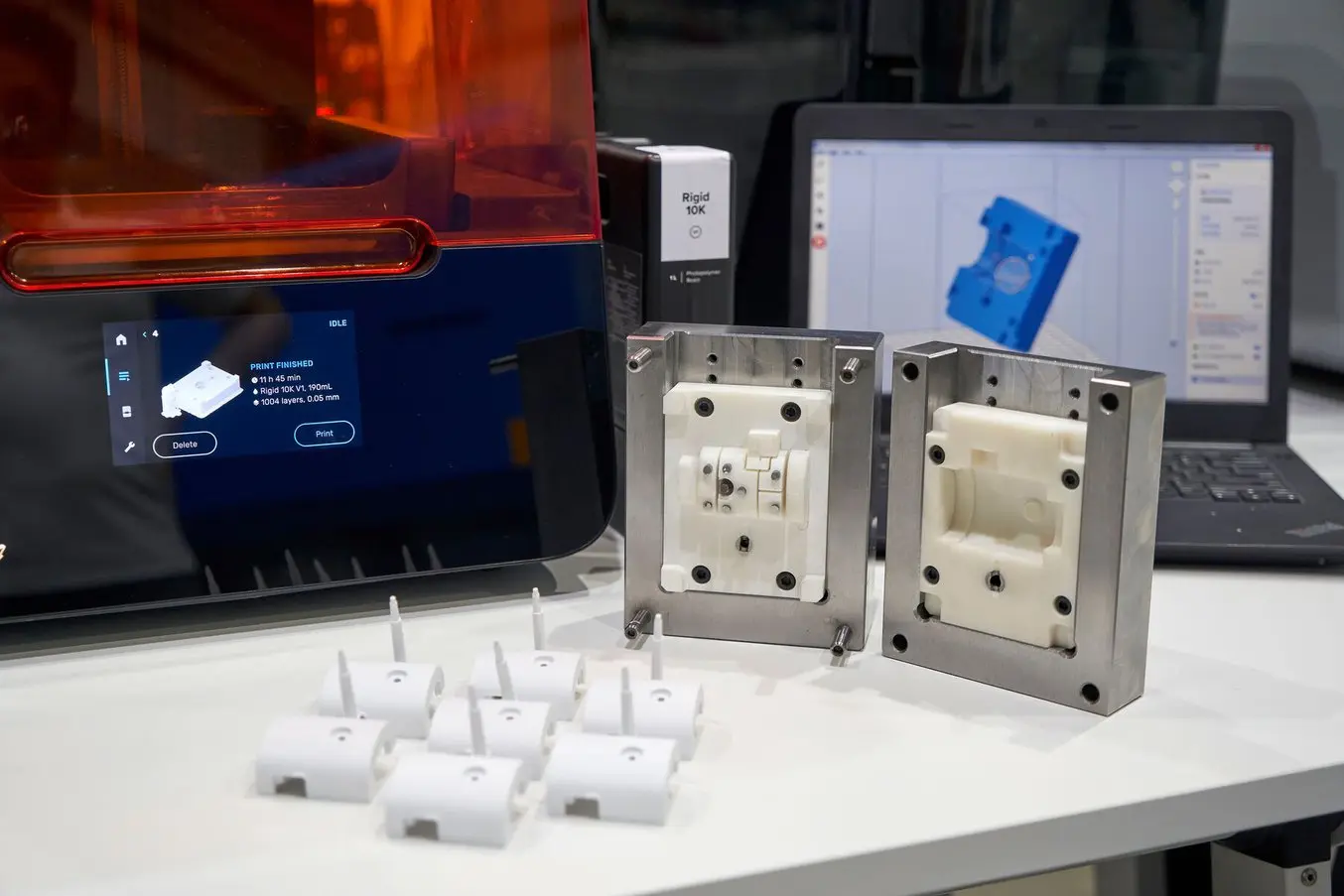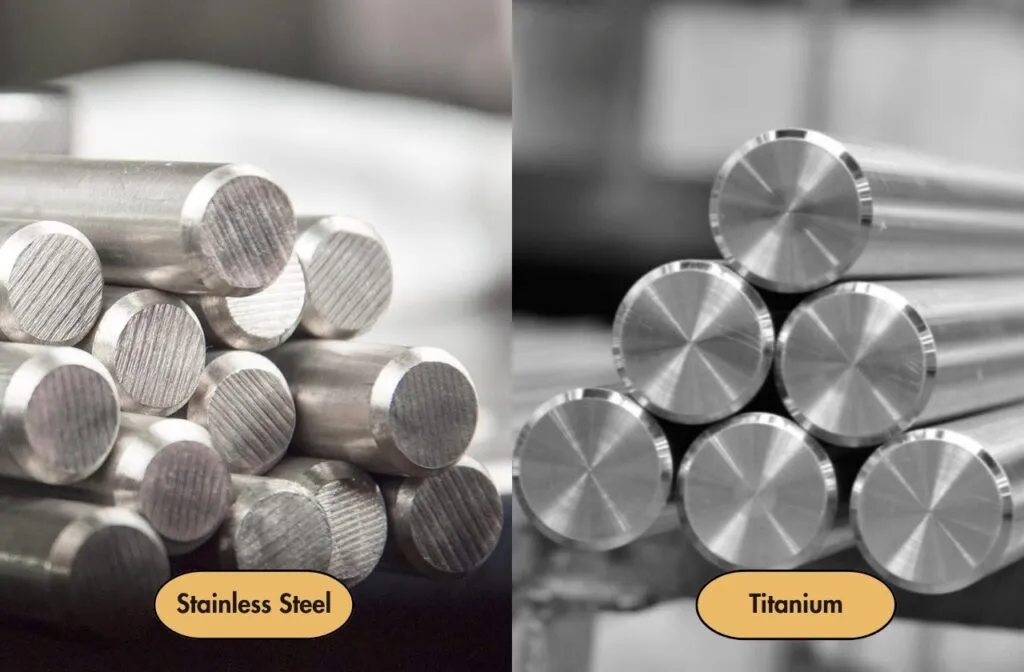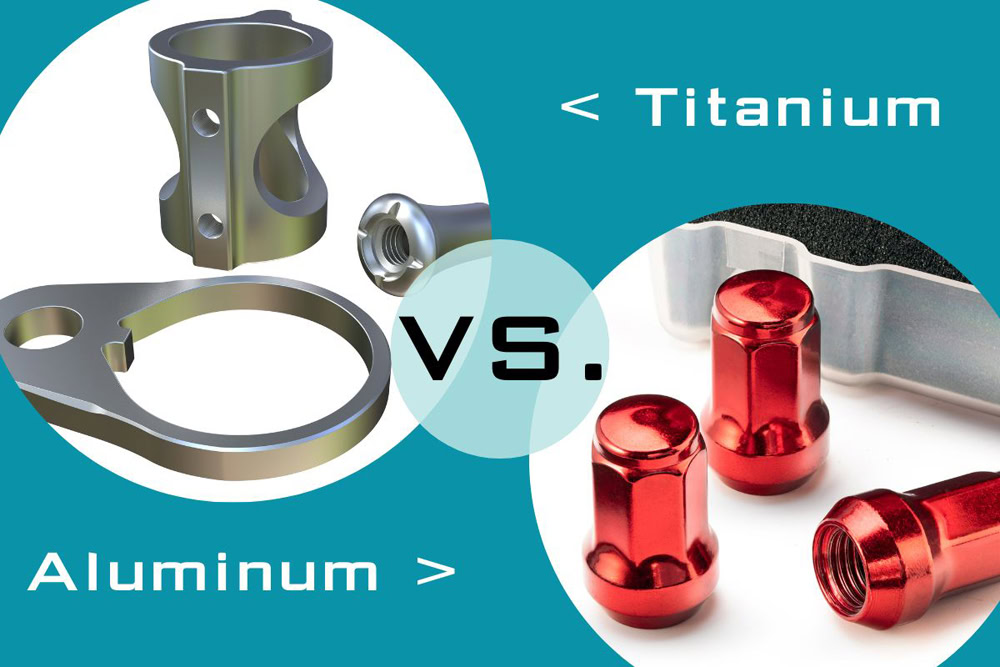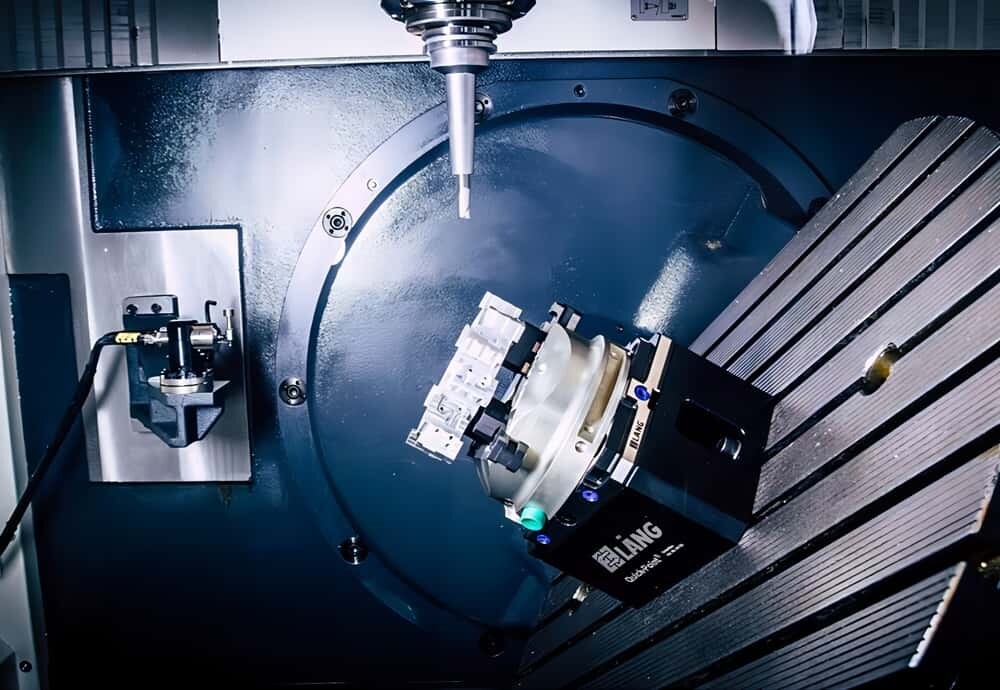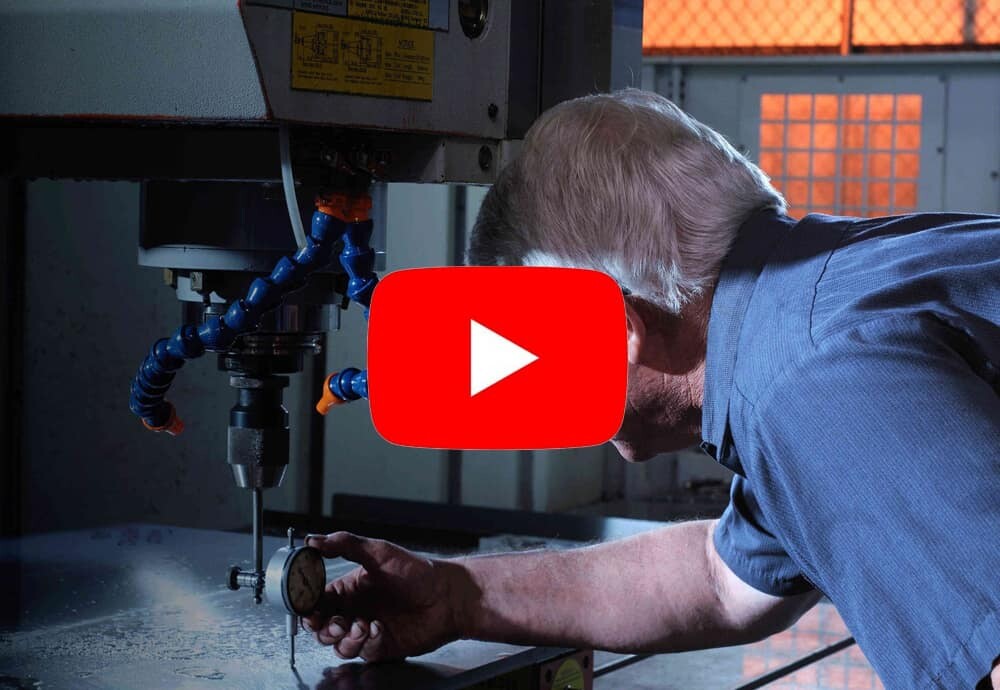In the world of CNC (Computer Numerical Control) machining, the quest for practicality and precision has led to the emergence of micro CNC machining. Unlike traditional machining, micro CNC machining refers to the production of parts with intricate and small features with precision and accuracy. This process has revolutionized the manufacturing industry by offering an alternative to traditional machining processes.Micro CNC machining is an ideal process for manufacturing parts with complex and intricate designs that require precision and accuracy. Compared to traditional machining, this process can create dimensional tolerances of up to +/- 0.0001 inches. This means that parts produced using micro CNC machining have a high degree of accuracy, making them ideal for various applications.
Table of Contents
ToggleWhat is Micro CNC Machining?
Micro CNC machining is a precision manufacturing process that uses a small, computer-controlled machine to cut intricate shapes and designs out of solid materials. It is a subset of CNC machining, which stands for Computer Numerical Control machining, and is used in industries such as aerospace, medical, and electronics. The difference between regular CNC machining and micro CNC machining lies in the size of the components being produced. In micro CNC machining, the tolerances are much tighter, and the parts being produced are usually less than 1mm in size.Micro CNC machining works by using a computer program to control a micro milling machine. The computer program tells the machine where to move and how much material to take off in each pass. The machine then uses a tiny cutting tool, called an end mill, to remove material from the workpiece. This process is repeated until the desired shape or design is achieved. Because the parts being produced are so small, a high level of precision is required, which is why micro CNC machining is often used in manufacturing parts for medical devices and other small applications.
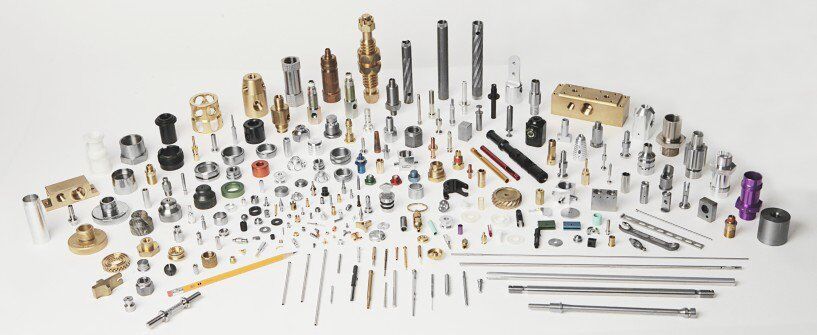
Benefits of Micro CNC Machining
There are many benefits to using micro CNC machining in manufacturing. These include:
– Improved accuracy: Micro CNC machining allows for greater precision than traditional manufacturing processes, resulting in parts that are exact and consistent.
– Speed and efficiency: Because the process is automated, manufacturers can produce parts quickly and cost-effectively.
– Versatility: Micro CNC machines can produce a wide range of shapes and designs, and can work with a variety of materials, including plastics, metals.
– Complex designs: Micro CNC machining is particularly useful for producing parts with complex shapes or designs that would be difficult or impossible to achieve with traditional manufacturing processes.
Limitations of Micro CNC Machining
1. Material Limitations.The first limitation of micro CNC machining is the limited range of materials that can be used. While it works best with metals like aluminum, brass, and stainless steel, it is not always suitable for other materials such as ceramics, glass, plastics, and composites. Materials that are too soft or brittle can also pose challenges, as they can easily break or deform during the machining process.
2. Size Limitations. The second limitation of micro CNC machining is the size of the parts that can be created. While the process is ideal for small parts with intricate designs, it is not always suitable for larger parts. The size of the CNC machine itself can also limit the size of the parts that can be created. In addition, the smaller the part, the more challenging it is to manipulate and machine with precision.
3. Complexity Limitations. The third limitation of micro CNC machining is the complexity of the designs that can be created. While it can produce intricate designs with high precision, it may not be suitable for parts with extremely complex geometric shapes or parts with features that are too close together. Additionally, some designs may require multiple machining operations, which can increase the cost and time of production.
4. Cost Limitations. Another limitation of micro CNC machining is the cost. While it is becoming more affordable, it can still be expensive compared to other manufacturing processes. The cost of materials, programming, and machines can add up quickly, especially for small production runs. In addition, the more complex the design, the higher the cost of production.
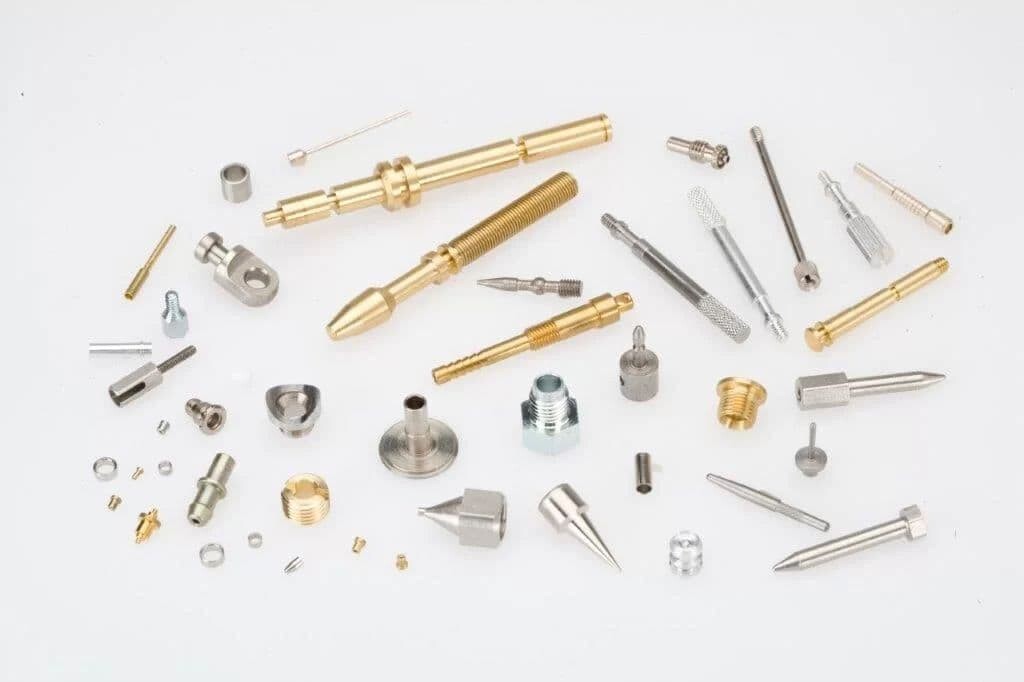
The Importance Of Tight Tolerances In Micro CNC Machining
Micro CNC machining has many advantages over traditional machining processes, especially when it comes to producing complex, detailed parts with tight tolerances. Tight tolerances are essential in the manufacturing of precision components in the aerospace, medical, and electronics industries.
1) Precision parts require tight tolerances: Tight tolerances are critical in the development of precision parts. CNC machining technology enables creating parts with a high level of accuracy, which is essential in the production of medical devices, aerospace, and military components. Tight tolerances help guarantee the quality of the part and safeguard against malfunctions.
2) Increased efficiency: Tight tolerances allow for more efficient manufacturing processes. High quality micro CNC machines can produce parts with precise accuracy without additional polishing or post-processing, which can be time-consuming. This improved efficiency brings down production costs and saves time.
3) Consistent quality: Tight tolerances are crucial to maintain consistent quality. Producing precise, accurate parts shift-to-shift ensures that every piece meets the necessary tolerances, cuts down the need for quality checks and saves time. This is especially necessary in mass-production runs, where one defective piece can cause production delays and be costly.
4) Enhancing design flexibility: Tight tolerances increase design flexibility, enabling engineers and designers to produce parts of intricate complexity. The accuracy that micro-CNC machines can achieve broadens design horizons, giving designers more control over the appearance and functionality of the final product.
5) Precision to the micron level: Advanced micro CNC machines can produce parts with tolerances to within just a few microns, enabling accuracy levels that were not possible before. This microscopic precision is crucial when constructing parts for medical devices and implants that involve tight-fitting parts and detailed geometries.
Materials Compatible With Micro CNC Machining
Micro CNC machining has made it possible to machine a wide range of materials with precision. Metals, plastics, composites, and exotic metals are all materials that can be machined using micro CNC machines. CNC parts designers can choose the material that best suits their application based on factors such as strength, durability, and temperature resistance. As materials technology continues to advance, more materials will become compatible with micro CNC machining, opening up new possibilities for precision part production.
1. Metals.Metals have been the primary materials used in micro CNC machining. Various materials such as aluminum, brass, copper, and stainless steel have been successfully machined using micro CNC machines. Metals are ideal for this type of machining because they are strong and durable. They also have good thermal conductivity, which means they are less likely to overheat during machining. Metals are also widely available and relatively easy to machine, making them an ideal material for CNC parts designers.
2. Plastics.Plastics are becoming increasingly popular for micro CNC machining due to their ease of machining and low cost. Some of the commonly machined plastics include acetal, nylon, polycarbonate, and acrylic. Plastics have a lower melting point, making them prone to deformation during machining. When machining plastics, it is important to use the correct machining parameters to avoid overheating and melting.
3. Composites.Composites are materials made by combining different materials to create a new material that has improved properties. Examples of composites include carbon fiber, fiberglass, and Kevlar. Composites are ideal for micro CNC machining because they are lightweight and strong. They can also be tailored to have specific properties, making them ideal for a wide range of applications.
4. Titanium and other exotic metals.Titanium and other exotic metals are difficult to machine using conventional machining methods due to their high strength and low machinability. However, micro CNC machining has made it possible to machine these materials with precision. Titanium is commonly used in the aerospace industry due to its superior strength-to-weight ratio. Other exotic metals that can be machined using micro CNC machines include magnesium, nickel, and tungsten.
Key Factors To Consider For Successful Micro CNC Machining
Successful micro CNC machining requires a deep understanding of the factors involved in the process. These factors include speed, feed, tools, and coolant. Manufacturers must optimize these factors to achieve optimal efficiency, accuracy, and precision in the machining process. CNC parts designers must select tools that are appropriate to the specific application and pay meticulous attention to the speed and feed settings while adhering to the necessary safety measures. By considering these essential factors, CNC parts designers can produce high-quality parts while reducing the number of failed attempts.
1. Speed.Speed is an essential factor when it comes to micro CNC machining. The surface speed of a cutter determines the speed at which a machine cuts through a material. The surface speed of a cutter must be adjusted to match the material’s hardness and the diameter of the cutter. When the surface speed is too slow, the material may start to rub against the cutter instead of cutting. This puts more stress on the cutter, causing it to wear out quickly. On the other hand, if the surface speed is too high, the cutter may break due to too much heat and friction. Therefore, it’s essential to optimize the surface speed for the specific material being machined.
2. Feed.Feed refers to the rate at which the cutter advances into the material being machined. Incorrect feed rates lead to poor surface quality, shortened tool life, and even irreversible damage to the machine. Adjusting the feed rate depends on several factors, including machine rigidity, the hardness of the material being machined, cutter diameter, and depth of cut. A general rule of thumb is to start with a low feed rate and gradually increase it until a good surface finish is obtained. A high feed rate is recommended for roughing cuts, while a lower feed rate is ideal for finishing cuts.
3. Tools.The tools used in micro CNC machining are equally crucial to the success of the process. Since these parts require extreme precision, the right tools must be used. High-speed steel tools are the most commonly used but are not appropriate for all materials. Carbide tools, on the other hand, are more durable and better suited for hard materials. Diamond tools are the most durable and efficient, although they are also the most expensive. It’s essential to choose the right tools for the job to achieve the desired precision and accuracy.
4. Coolant.The role of coolant in CNC machining cannot be overstated. Coolant helps reduce the temperature of the cutter and material, increasing tool life and improving surface quality. Moreover, it helps prevent chips from sticking to the cutter, which can cause damage and reduce efficiency. When choosing a coolant, manufacturers should consider factors such as compatibility with the material being machined, viscosity, and toxicity.
Achieving High Precision in Micro CNC Machining: Tips and Tricks
Micro CNC machining requires a high level of precision to create small and intricate parts that meet required specifications. Achieving such precision requires careful consideration of tools, materials, cutting parameters, CAM software, machine maintenance, and quality control measures. By following these tips and tricks, you can improve the accuracy and quality of parts, reducing errors and waste. At the end of the day, the key to success in micro CNC machining is to remain vigilant and continually strive for improvement.
1. Choose the Right Tools and Materials
One of the most important factors in achieving high precision in micro CNC machining is choosing the right tools and materials. Use high-quality tools with sharp edges and make sure they are properly maintained. Choose materials that are appropriate for the part and equipment being used. Soft materials such as plastics or aluminum are easier to machine than harder materials such as steel, but they may require different cutting speeds and feeds.
2. Optimize Cutting Parameters
Another important factor in achieving precision in micro CNC machining is optimizing cutting parameters. Cutting speed, feed rate, and depth of cut should be carefully considered and adjusted based on the material, tool, and part being machined. Using the wrong cutting parameters can result in tool wear, poor surface finish, and other issues that can affect precision.
3. Use Advanced CAM Software
Computer-aided manufacturing (CAM) software is essential in micro CNC machining as it helps to program the machine and generate the toolpaths needed to create the part. Advanced CAM software can help optimize cutting parameters based on the part and material being machined, reducing errors and improving precision.
4. Conduct Regular Maintenance and Calibration
Regular maintenance and calibration of the CNC machine is essential in achieving high precision. Keep the machine clean and well-maintained, and replace worn parts as needed. Calibrate the machine regularly to ensure that it is running accurately and consistently. In addition, monitor the process and make adjustments as needed to maintain precision.
5. Invest in Quality Control
Investing in quality control measures can help detect errors early on, before they result in wasted time and materials. Use measuring tools such as micrometers, optical comparators, and coordinate measuring machines to verify the accuracy of parts. Establish and monitor quality metrics and implement corrective actions when errors are detected.
Exploring The Applications of Micro CNC Machining
Micro CNC machines have made precision manufacturing accessible and affordable across different industries. It has revolutionized the way complex components are designed and manufactured, making it possible to create the most intricate and precise parts with ease. From medical devices to the jewelry industry, micro CNC machining has become an essential tool for precision manufacturing. With the advancement of technology, we can expect micro CNC machines to play an even more crucial role in the manufacturing industry.
1. Medical Industry: With the increasing demand for precision in the medical industry, micro CNC machining has become an essential tool for manufacturing medical devices. Micro CNC machines can produce intricate parts that are required for medical devices such as stents, catheters, and implants. These small parts must be manufactured to precise dimensions to ensure that they function correctly, and micro CNC machines make that possible.
2. Aerospace Industry: The aerospace industry is known for its rigorous standards for precision and quality. Micro CNC machining has become an integral part of the industry and is used in the manufacturing of aerospace components such as turbine blades, mechanical sensors, and fuel injection systems. These components require high precision and accuracy, which micro CNC machines deliver consistently.
3. Electronics Industry: Manufacturing of electronics components requires precision and accuracy, and micro CNC machining has become a game-changer. The production of printed circuit boards (PCBs) and their components requires the use of micro CNC machines. These machines can produce small, intricate components that are essential in modern electronic devices such as smartphones, laptops, and televisions.
4. Automotive Industry: The automotive industry requires high precision parts with close tolerances for the smooth operation of cars and trucks. Micro CNC machining has become a vital tool in the manufacturing of engine components such as cylinder heads, pistons, and engine blocks. The use of micro CNC machines has enabled manufacturers to produce parts with tight tolerances, which ultimately improve the performance and efficiency of vehicles.
5. Jewelry Industry: The jewelry industry has seen an increase in the use of micro CNC machines in the production of complex designs and patterns. These machines are efficient in creating intricate shapes, patterns, and structures that were previously impossible to make. The ability to produce high-quality and intricate designs has opened up new possibilities for the industry.
Micro Milling, Micro Turning, And Micro Grinding
The techniques of micro milling, micro turning, and micro grinding, are crucial for the production of small and complex parts and components. Designers should evaluate the requirements for their parts and select the technique that best suits their needs. Regardless of the technique chosen, specialized equipment and highly trained operators are necessary to achieve the desired results. The advancement of technology in the CNC machining industry has led to the creation of more efficient and effective techniques, making it possible to create precise and complex parts with increasing ease.
1. Micro Milling
Micro milling is a process that uses a milling cutter to remove material from a workpiece to create complex shapes and features with high precision. It is capable of producing parts with dimensional accuracy in the range of micrometers. The technique is commonly used for creating miniature components for electronics, medical devices, and aerospace applications. The advantages of micro milling include its precision, accuracy, and ability to create complex geometries. However, the process can be time-consuming and expensive due to the need for specialized equipment.
2. Micro Turning
Micro turning is a process that uses a rotating tool to remove material from a workpiece to create cylindrical or conical shapes with high precision. The process is well suited for creating small parts and components with excellent surface finishes. Micro turning is commonly used for creating precision parts for the aerospace, medical, and automotive industries. The technique has the advantage of creating high-quality finishes with low tool wear and high productivity. However, the process requires specialized equipment and skilled operators to achieve the desired results.
3. Micro Grinding
Micro grinding is a precision grinding technique that uses a grinding wheel as a tool to remove material from a workpiece. The technique is capable of producing parts with tight tolerances and excellent surface finishes. Micro grinding is commonly used for creating complex and delicate components for the medical and aerospace industries. The advantages of micro grinding include its ability to produce very precise shapes and features, with excellent surface finishes. However, the process requires specialized equipment and can be expensive due to the high cost of the grinding wheel.
Each of the techniques discussed has its own unique benefits and drawbacks. Micro milling is excellent for creating complex shapes, micro turning excels at creating cylindrical and conical shapes, and micro grinding produces parts with high precision surface finishes. When choosing a technique, designers should consider the desired outcome, the size and complexity of the part, and the available budget.
Conclusion
Micro CNC Machining is a powerful tool that offers several benefits in the realm of manufacturing, including unmatched precision, higher accuracy, and better surface finishes. The importance of tighter tolerances, suitable materials, and critical success factors make Micro CNC Machining an essential part of modern manufacturing in numerous industries. This technology has helped revolutionize the production of parts in aerospace, medical devices, automotive, and electronics industries. So, if you want to experience the difference that precision makes, reach out to us at AN-Prototype, and let’s take your project from concept to reality.
